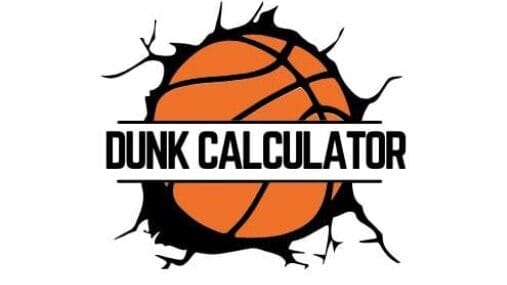If you have ever dreamed of rising above your defender to slam a dunk or block a shot with authority, then mastering how to get a higher vertical for basketball is your next big step. Building a powerful vertical jump isn’t just for elite athletes it’s possible for anyone with the right approach.
By combining focused plyometric exercises, explosive jump squats, and smart agility drills, you can develop serious bounce. Success comes down to proper technique, consistency, and targeted training. In this guide, we’ll break down exactly what you need to jump higher for basketball and maximize your athletic potential on the court no fluff, just facts.
Why Vertical Jump Matters in Basketball
Your ability to leap quickly and powerfully changes how you play. A strong vertical jump helps you block shots, finish strong at the rim, and beat defenders in the air. Every inch matters when it comes to jumping higher.

Players with good explosive strength can cover more ground and move faster on the court. They have quicker defensive movement, better coordination, and more court agility. That’s why all elite athletes focus on vertical goals in their training program.
10 Best Exercises to Increase Your Vertical Jump
To improve vertical jump, you need smart and consistent plyometric exercises. These moves develop fast-twitch muscle fibers and give you more power. Focus on building your hamstrings, quadriceps, and hip flexors for serious results.
Here’s a table of the top 10 exercises for a killer jump workout for basketball:
| Exercise Name | Muscle Focus | Key Benefit |
| Jump Squats | Quads, Glutes | Builds explosive strength |
| Tuck Jumps | Core, Quads | Improves body control and air time |
| Depth Jumps | Calves, Glutes | Reacts faster off the ground |
| Single-Leg Box Jumps | Glutes, Hamstrings | Improves balance and vertical leap |
| Lateral Bounds | Glutes, Quads | Boosts side-to-side agility |
| Bulgarian Split Squats | Quads, Glutes | Builds leg power and stability |
| Broad Jump | Hamstrings, Core | Increases horizontal and vertical jump |
| Plyo Box Jumps | Glutes, Quads | Trains full body explosiveness |
| Calf Raises | Calves | Strengthens take-off power |
| Resistance Band Jumps | Full Body | Adds load and builds strength |
Doing these three times a week can help you track your progress and reach your vertical goals.
Drills to Train Vertical Power and Agility
Adding jumping drills to your workout routine improves your court speed and agility. These drills focus on reaction time, coordination, and side-to-side agility. Use tools like cones for drills and resistance bands to make it harder and more fun.
One great example is jumping up to touch a wall or backboard repeatedly. Another is using cones to create short sprints with a jump finish. Combine that with lateral movement and you’ll start seeing results. Always remember to land softly to avoid injuries.
Designing Your Weekly Jump Training Plan
A good training program should include plyometric exercises, strength work, and mobility sessions. Spread out workouts to give your body time to rest and grow stronger. You should also add time for foam roller recovery and stretching.
Here’s a sample weekly plan:
| Day | Focus | Workout |
| Mon | Plyometrics | Jump squats, box jumps, tuck jumps |
| Tue | Strength | Bulgarian squats, calf raises, resistance bands |
| Wed | Rest & Mobility | Stretching, foam roller, light cardio |
| Thu | Agility | Lateral drills, cone sprints, quick feet |
| Fri | Plyo Power | Depth jumps, single-leg hops, broad jumps |
| Sat | Game Simulation | Court drills, defensive movement, dunk practice |
| Sun | Recovery | Walk, yoga, cooldown |
This type of workout routine helps you track improvements weekly.
Science Behind Jump Training: How Your Body Builds Explosiveness
When you train for jumping, your body adapts by building more fast-twitch muscle fibers. These fibers help you react faster and sprint quicker. Your brain also gets better at sending signals to your legs, making your moves more powerful.

Proper training strengthens your hip flexors, quadriceps, and hamstrings. This gives you better lift and helps you land softly after each jump. Add this to your warm-up routine, and your sports performance will skyrocket.
Beginner to Advanced Vertical Jump Programs
Not everyone starts at the same level. Beginners should work on bodyweight exercises and form. Start with jump squats and light tuck jumps. Use your own body as resistance and learn how to control your jumps.
If you’re advanced, try resistance bands, weighted vests, or plyo box drills. Mix strength and agility drills in one session. Always create a workout plan that suits your goals and adjust it as you track improvements.
Common Mistakes That Kill Your Vertical Jump Progress
Many athletes skip their warm-up routine or don’t give enough time to cooldown. This can lead to injuries and poor results. Rushing the process is another big mistake. Without rest, your fast-twitch muscle fibers can’t grow properly.

Some players focus only on plyometric exercises but ignore flexibility and mobility. Use a foam roller, stretch after workouts, and get enough sleep. You should also set goals and write them in a workout journal to stay consistent.
Nutrition & Recovery Tips to Maximize Your Jump Gains
Food is your fuel. Eating right helps your muscles grow and recover. Before a workout, eat carbs and protein for energy. After your jump workout for basketball, refuel with lean meats, eggs, fruits, and water.
Recovery is just as important. Use a foam roller, drink plenty of water, and sleep at least 8 hours. These tips help with injury prevention, muscle repair, and stronger results. Don’t forget to take time for mental rest too.
Local Basketball Jump Training Camps & Clinics
If you are in the USA, you are lucky. There are great camps in states like California, Texas, New York, and Florida. These camps teach how to create a workout plan, use cones for drills, and track your progress with expert help.

Some offer virtual sessions if you can’t travel. Clinics use plyo box drills, agility training, and strength work to help you grow fast. It’s also a fun way to meet other athletes and set basketball goals together.
Coach’s Corner: Expert Tips for Vertical Jump Training
Top coaches say one thing: Consistency beats talent. If you show up and work hard, your vertical goals are within reach. Don’t skip your warm-up routine. Start slow, focus on technique, and always land softly.
Use tools like resistance bands, cones, and plyo box steps. Keep a workout journal and celebrate each small win. As one coach said, “Jumping high isn’t magic—it’s movement plus mindset.
FAQS
1. What is the best vertical jump training program?
The best vertical jump training program is Vert Shock, known for fast, effective plyometric-based workouts without heavy weights.
Alternative: Jump Manual is also highly rated for combining strength, nutrition, and jump-specific training.
2. What is vertical jump training called?
Vertical jump training is often called plyometric training or explosive power training, focusing on developing lower-body strength and speed.
3. What is a good vertical jump for a basketball player?
A good vertical jump for a basketball player is 28–34 inches, while elite athletes often exceed 40 inches.
4. What type of training is vertical jump?
Vertical jump training is a mix of plyometrics, strength training, and neuromuscular conditioning, targeting explosive lower-body power.

